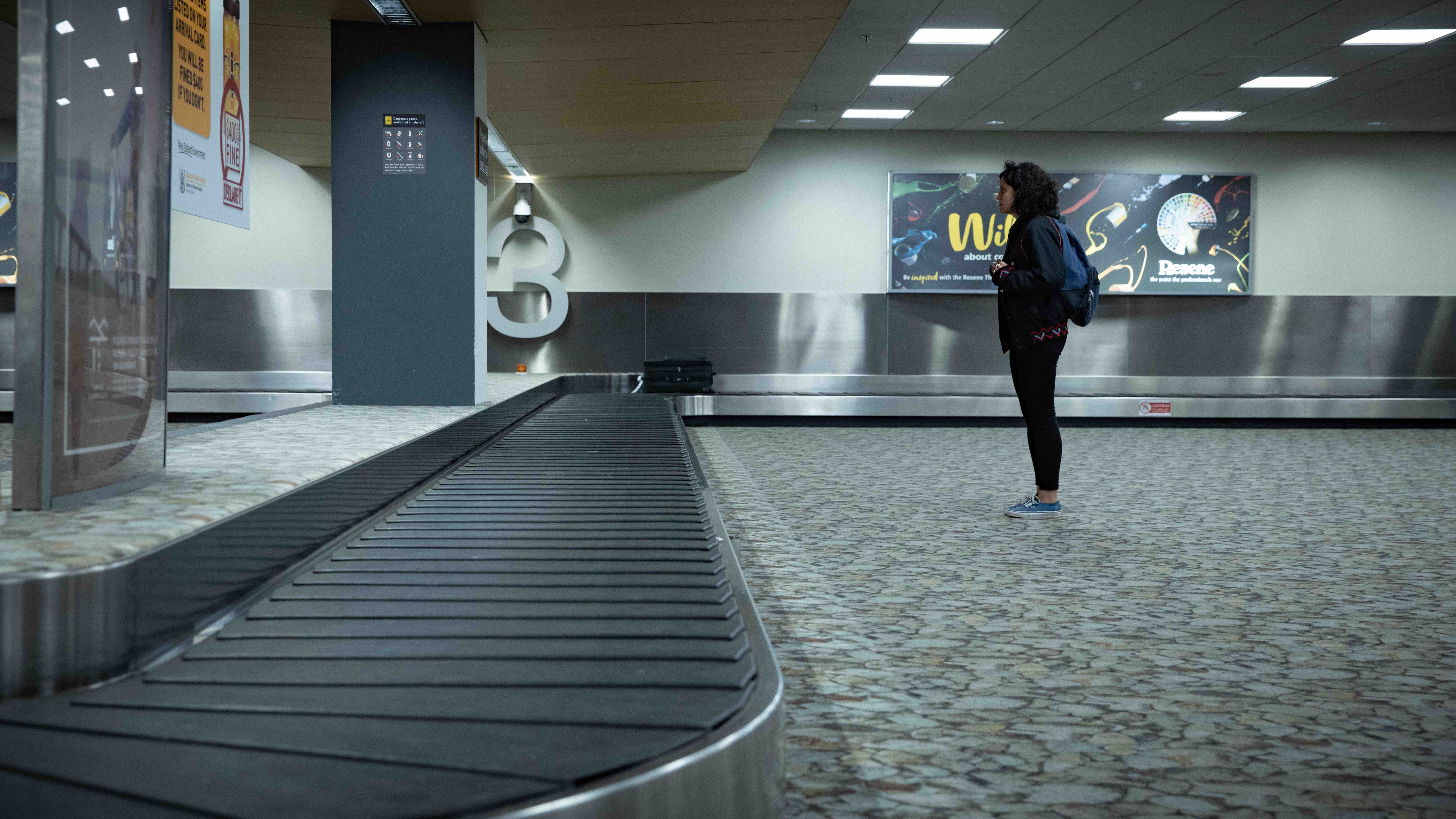Millie Lies Low (Michelle Savill, 2021) begins in media res – or, to be more accurate, right slap-bang in the middle of the eponymous protagonist (Ana Scotney) having an anxiety attack (not that she will call it that – not yet, anyway). She’s been crammed into the cattle truck of an economy flight from Wellington to New York City, and isn’t having it. So, on the spur of the moment, she makes the decision to get off the plane. Millie isn’t ready to go anywhere.
For many of us, the pre-pandemic drudgery of cheap international flying has, since the arrival of COVID-19 and its associated lockdown shenanigans, become something of a dreamlike fantasy, but that’s not the world Millie lives in. She has problems, but her reality and the world she inhabits are deliberately off kilter with our own. Millie is in her own world in a whole variety of ways, and that’s the point: she has some growing up to do, some life lessons to learn, a whole feature film’s worth of coming of age to go through until she’s ready to plant her feet on terra firma as a more mature Millie, lying low no more.

Once off the plane and having collected her luggage (her lone suitcase a sorry sight on the airport carousel), she quickly realises the gravity of what she’s just done. Having been awarded a career-making internship with a highly reputed New York–based architecture firm, the future for Millie up until this moment – on the surface, at least – has been bright. Indeed, as she sits sadly in the largely empty airport lounge pondering how to get the cash for another flight, her face looms overhead on a large video billboard. Millie is a star, the literal poster girl for her university; her unruly curls are straightened as she brims with false confidence and talks about how proud she is to ‘represent New Zealand at a global level’. Only moments into the film, we already have enough information to put two and two together: Millie has a serious case of impostor syndrome, and something inside her – deep, deep inside her – has broken the glass and pushed the emergency button. Everything is going great for Millie; except, well, it isn’t.
So she does the only thing she can think of doing while she sources the funds to pay for another flight: she grifts. Googling images of the view from a plane and utilising some basic Photoshop skills, she uploads selfies to her Instagram account in order to maintain at least the image of a successful, professional jetsetter, and proceeds to hide out in Wellington. For much of the film’s running time, Millie can’t bring herself to admit the truth of what she’s done to anyone – not to her best friend, her boyfriend or even her mother – reflecting the cold, hard fact that she is pretty bewildered by it all herself. But rather than focusing on the ‘why’, Millie busies herself with the minutiae of her situation. It’s a pretty simple to-do list: first and foremost, find a way to get to New York; and, until then, keep up the social media facade that she is already there.
That pesky ‘why’, however, proves hard to avoid as a series of events makes it increasingly difficult for her to keep the charade going. Millie lies low until, well, she can’t anymore – and it’s at this point that, in generic terms, she comes of age. There’s some embarrassment, some pissed pants, some loneliness and plenty of insecurity along the way, but the Millie that emerges from the ashes of the success she herself squandered is, satisfyingly, a better, fuller, more rounded person. And that’s what we signed up for, right? Right. But wait – there’s more.
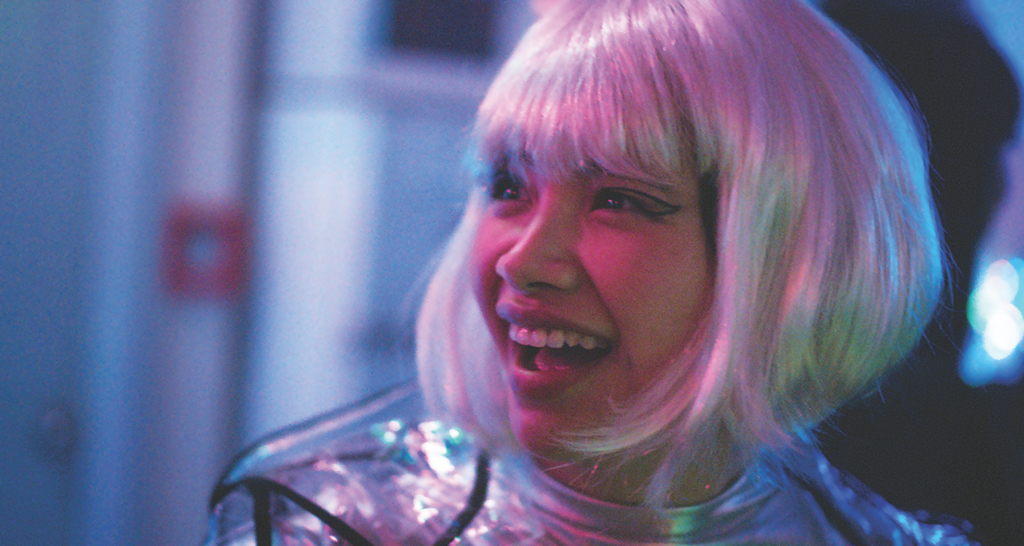
Wandering through uncertainty
For much of the film’s running time, Millie meanders, drifting from vignette to vignette that cover a spectrum from soft melodrama to consciously awkward comedy. The film meanders, too: Millie’s unstructured ‘and then this happened, and then this happened’ roller-coaster ride in the days after ditching her flight is structurally reflected in the film; and, at first, beyond amplifying the old adage that there’s a thin line between tragedy and comedy and Scotney’s career-making performance,[1]Scotney previously appeared in Madeleine Sami and Jackie van Beek’s dazzling comedy The Breaker Upperers (2018). there’s seemingly not much going on beneath the surface here.
But that is precisely the point. Millie has spent her whole young adult life exhaustingly putting all her energy into keeping up appearances. Surfaces are all that have mattered to Millie until, when she is squashed onto that cheap flight to New York, something snaps. From that point onwards, Millie’s journey becomes a live-action Choose Your Own Adventure novel in which, at almost every step of the way, she makes precisely the wrong choice; her desperation to maintain the veneer of her video billboard–friendly performance of success drives her further and further into a tangled web of lies, deceit and associated ephemeral bullshit.
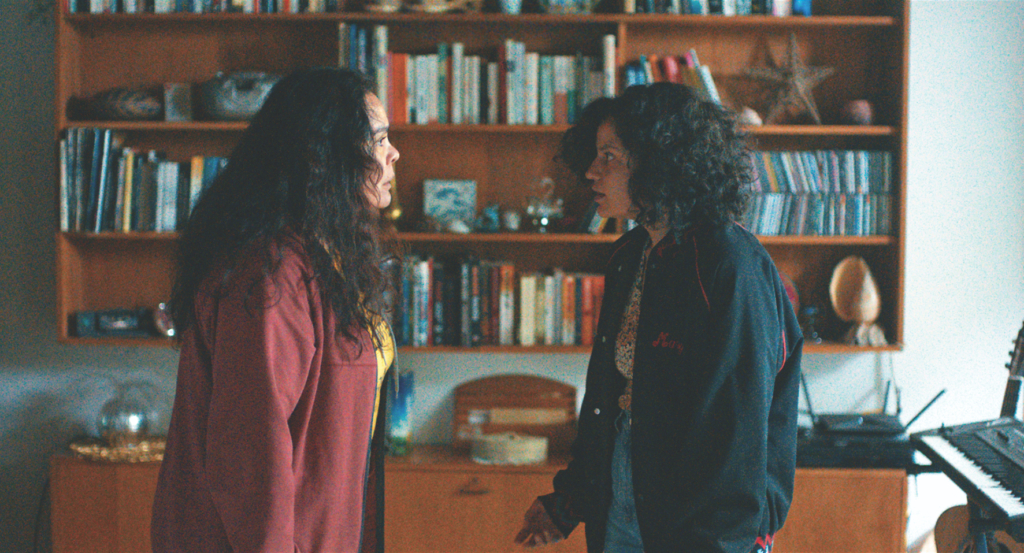
Millie Lies Low is a film that doesn’t know where it’s going, but that’s okay because it’s a film about a young woman who doesn’t know where she’s going. There are moments of cringe-inducing comedy (almost always at Millie’s expense), but it’s these hijinks that propel the story ahead; whether it’s breaking into her best friend’s party in order to steal her own car and sell it for cash for another flight, or an unforgettably weird almost–sex scene with her university tutor, Millie Lies Low certainly has bang for your buck on the ‘stuff happening’ front. But, again, when we scratch the surface, we start to see that the engine of the film is propelled by something much more powerful.
Our repeated question that drives the narrative core of the film as a central enigma, ‘Where does Millie go from here?’, inescapably mirrors our asking the very same thing about ourselves: Where do we go?
Whether through design or a happy accident, there’s something satisfyingly unsatisfying about Millie Lies Low. The comedy isn’t big enough and the drama isn’t big enough, but precisely because of this – precisely because both the film and Millie herself meander so – it does a remarkable job of capturing the broad post-pandemic ennui and disorientation that have riddled so many of us around the world, all through quite magically not even mentioning or acknowledging the pandemic at all. Our repeated question that drives the narrative core of the film as a central enigma, ‘Where does Millie go from here?’, inescapably mirrors our asking the very same thing about ourselves: Where do we go? As Millie discovers, the allure of lying low works until it doesn’t. Millie Lies Low sees us, whether it’s trying to or not.
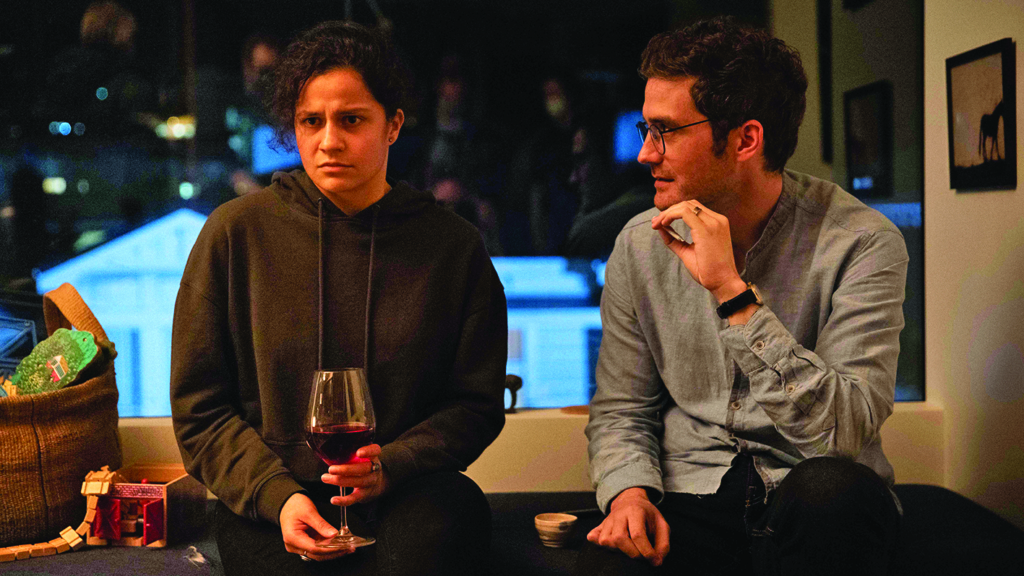
Engaging with character
One of the most likeable things about Millie Lies Low is just how unlikeable Millie herself is, in the orthodox sense. She is, to opt for the primary school vernacular, a try-hard. That’s particularly sad because she actually has the success that those around her envy, but she only attained that by faking it till she made it. Millie’s character development is, to be fair, pretty paper-thin; her trauma reflects that, like the film’s writer/director,[2]As Savill notes, she ‘grew up in various parts of the Philippines, the child of missionary parents, moving to Aotearoa as an adult’. See ‘About Michelle Savill’, Michelle Savill official website, <https://michellesavill.com/About-Michelle-Savill>, accessed 15 August 2022. her missionary parents dragged her from place to place as they pursued their holy vocation, denying their daughter a solid environment to grow up in and leading her mother to confess that she ‘mucked’ her daughter up. But while Millie may be ‘unlikeable’, what matters is that Savill makes us like her anyway. We find new ways to ‘like’, to connect. Millie has learned a lesson, but maybe we have learned an even more important one.
The question of identification thus becomes an interesting one to consider when watching Millie Lies Low. Along with a slew of other recent, similarly themed ‘character-we-are-ambivalent-about opts out of their responsibilities because they are kind of an arsehole, yet we travel with them’ films such as Michel Franco’s Sundown (2021) – an unexpectedly perfect and delightful candidate for a double bill with Millie Lies Low if ever there was one – film theorist Murray Smith’s groundbreaking 1995 book Engaging Characters: Fiction, Emotion, and the Cinema is a useful reference point here. When discussed in general terms, it’s often reductively implied in film criticism more broadly that being able to identify with a protagonist is ‘good’, whereas if we cannot identify with them, it is ‘bad’; for Smith, however, what matters is not identification, as such, but engagement.[3]See Murray Smith, Engaging Characters: Fiction, Emotion, and the Cinema, Clarendon Press, Oxford, UK, 1995. When you think about it, the latter trumps the former almost every time.
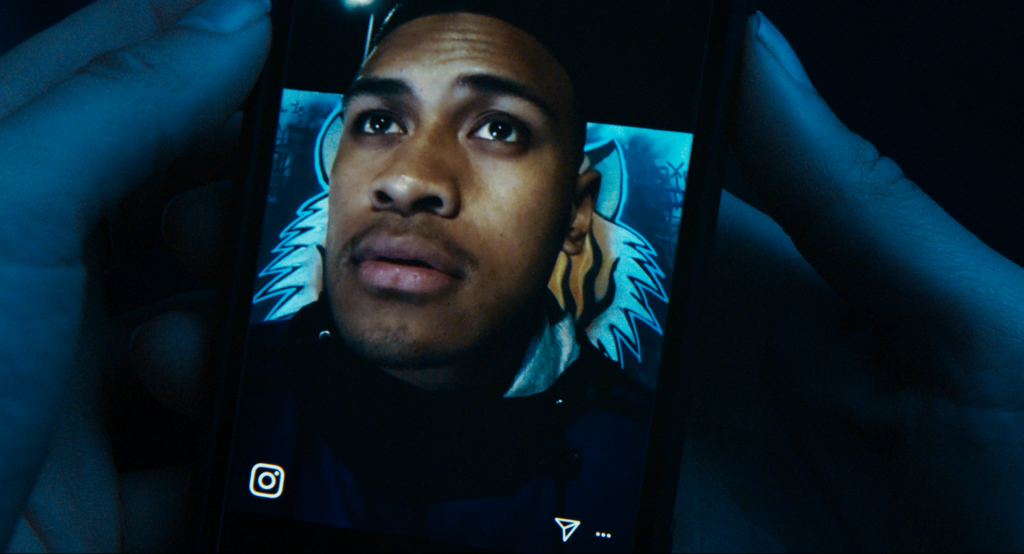
This process of engagement hinges on three steps: recognition, alignment and allegiance. The first element here, recognition, is relatively self-explanatory (How does this character overlap with or deviate from my understanding and experience of what real people are like?). But both allegiance and alignment especially are hugely useful concepts when considering films that pivot around ambivalent characters like Millie. For Smith, alignment can pertain to how a given character relates to time and space, and also how we are subjectively positioned in relation to them: Do we experience things through them? Do we follow their story? Alignment, Smith notes, ‘describes the process by which spectators are placed in relation to characters in terms of their access to their actions, and to what they know and feel’.[4]ibid., p. 93 This is in contrast to allegiance, which is more of an emotional and moral connection: Do we feel for a character, even if we’re not experiencing those same feelings ourselves directly?
We are aligned with Millie – very much so. And, as the film unfolds before us, although we may or may not like her, a sense of allegiance develops, too; the character works hard, and she earns it. Ultimately, then, regardless of whether or not we ‘identify’ with Millie, we are – much more importantly – there with her. On that note, there’s something charming about the origins of the film lying in a real-life incident Savill herself experienced. As she has explained in an interview,
The idea came when I was travelling to a festival in France with my short film Ellen Is Leaving [2012]. The New Zealand Film Commission was paying for me to go, but when I got to the airport I discovered I was a day late. I was horrified. A new ticket would be three grand; money I didn’t have.
My first thought was that I’d have to hide out in Wellington for three weeks and pretend I was in France. I didn’t end up doing that, but it sowed the seed for Millie Lies Low – what if someone actually did that, just for a few days while trying to get the money together for another ticket. What would they have to do to keep up the ruse? How would their lives be affected, and those around them?[5]Michelle Savill, quoted in Steve Newall, ‘Michelle Savill on Her Ana Scotney-starring Comedy-drama Millie Lies Low’, Flicks.co.nz, 18 October 2021, <https://www.flicks.co.nz/features/michelle-savill-on-her-ana-scotney-starring-comedy-drama-millie-lies-low/>, accessed 15 August 2022.
This connection to the lived experience of the film’s writer/director again evokes associations with those wonderful Choose Your Own Adventure novels – ‘What if?’ Savill asks. And, for better or for worse, Millie finds the answers.
Endnotes
| 1 | Scotney previously appeared in Madeleine Sami and Jackie van Beek’s dazzling comedy The Breaker Upperers (2018). |
|---|---|
| 2 | As Savill notes, she ‘grew up in various parts of the Philippines, the child of missionary parents, moving to Aotearoa as an adult’. See ‘About Michelle Savill’, Michelle Savill official website, <https://michellesavill.com/About-Michelle-Savill>, accessed 15 August 2022. |
| 3 | See Murray Smith, Engaging Characters: Fiction, Emotion, and the Cinema, Clarendon Press, Oxford, UK, 1995. |
| 4 | ibid., p. 93 |
| 5 | Michelle Savill, quoted in Steve Newall, ‘Michelle Savill on Her Ana Scotney-starring Comedy-drama Millie Lies Low’, Flicks.co.nz, 18 October 2021, <https://www.flicks.co.nz/features/michelle-savill-on-her-ana-scotney-starring-comedy-drama-millie-lies-low/>, accessed 15 August 2022. |
